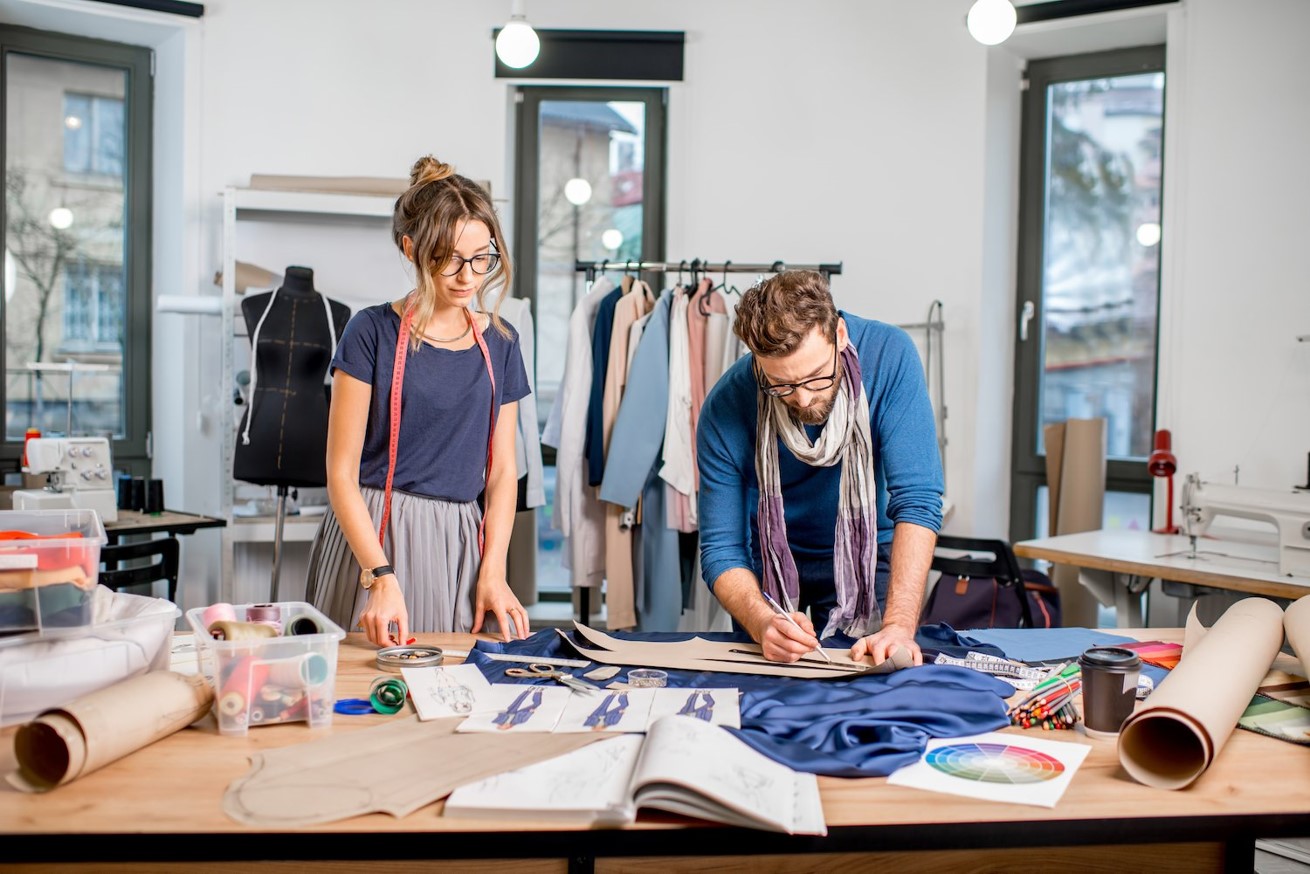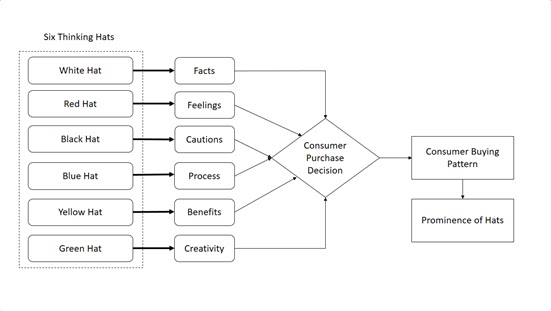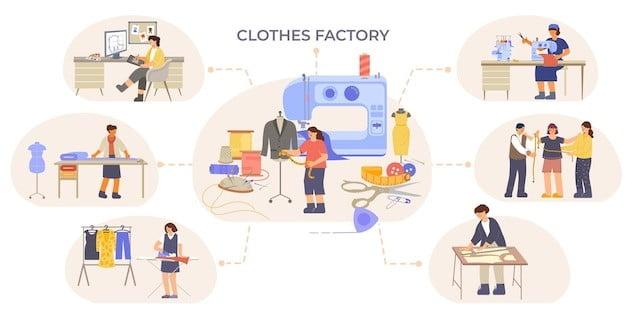What is Garment Merchandising?
Merchandising is executing an order from receiving to shipment through proper following-up the in-between processes. According to the American Marketing Association, merchandising encompasses “Planning involved in marketing the right merchandise or service at the right place, at the right time, in the right quantities, and at the right price.”
Merchandising can also be defined as the process of identifying and understanding what target customers want and providing them with the desired textile items or merchandise at a certain price and lead-time by making a communication bridge between the buyer and the vendor. So the merchandising process involves at least three parties namely-
- Company: who offers the product to the customer.
- Customer: who is targeted by the company with the help of merchandiser or who places the orders.
- Merchandiser: who places his/her position between the above two parties.
Merchandising Process from beginning to the end:
Merchandising Process from A to Z has been illustrated below. Apparel merchandising process, in fact, starts from garment marketing and usually merchandising manager or anyone from the upper hierarchy does this marketing with the potential buyers.
👉Marketing:
Garment marketers look for the potential buyers while at the same time buyers are sourcing for the right vendor. The manufacturing company tries to convince the potential buyers presenting what they can produce and what is their product portfolio. They certainly try to show their best to the buyers.
However, buyers indubitably have crystal clear data on the up-to-date market trend and product price issues. Buyers determine their product range what they are going to business and they choose the items by conducting a survey on consumer behaviour and fashion trends in their target market. They get early forecasting about the product or item to be ordered to the vendors.
👉Business Meeting
In a business meeting, both customer and vendors appear with all their possible credentials. At the very beginning, customers or buyers discuss their product demand what they are going to the business. Customers discuss what they want, e.g. T-shirt, Polo shirt, Tank-top etc. and different styling parameters what they want on the item.
For example, for a t-shirt, whether any chest-pocket or not, how about the necking- neck rib or plain fabric, what about the bottom hem etc. though styling may be changed later on through the sampling stages. Contrariwise, vendors also place their capabilities and may discuss their own product portfolio to convince the customers as a reliable vendor. After successful technical meeting with the vendor, they both agree on product style, amount, quality parameters, shipment mode, shipment port, and price details etc.
👉Buyer Request:
After the business meeting, buyers request some developments from the vendors. Vendors try to develop the sample as per the discussion at the business meeting. Actually, this development is to prove themselves as the right manufacturers. After evaluating the developed items buyers can have the final conception about the vendor that helps them to be confident.
In addition, buyers can have a look at the physical Outlook of the sample. They can add or delete any product features at this stage. For example, There was no chest print of the t-shirt when the meeting took place. But after seeing the sample, the buyer may want it. So this stage is important for both the parties. The vendor can show their capabilities while buyers can reassess the product styling details.
 |
| Figure: Textile & Apparel Merchandising from order to shipment. |
👉Pricing-Costing & Order confirmation:
If there is no big issue after submitting the sample and the buyer is satisfied, then the matter of pricing-costing comes up. Both customers and vendors offer their suitable price for the desired item. Customers initiate the price negotiation with a base price which is usually a lower price than the exact or tentative prices.
Vendors start with their target price which is, on the other hand, a bit higher price than the usual prices.
They go through a logical negotiation stage and finally reach a win-win point and make an agreement to proceed the order. Customers open a master LC against the order and generate the PO mentioning quite a detail information like size range, colours, quantity details, and shipment details etc. Vendors can initiate their jobs after getting the technical package or tech pack or technical specification sheet from the customer along with the master LC. They then execute the order as per the PO and ship it to the customers’ destination accordingly.
👉Preparing T&A:
No sooner had the order confirmed, merchandiser prepares
time and action calendar to meet the shipment on-time. Without a crystal clear
plan, it is quite impossible to ensure the shipment on time. Merchandiser makes
the list of all the materials required and processes involved in the order.
S/he then set the starting and ending date for each process. It is very clear
from the T&A calendar that when any process starts and when will end. Next,
it is his/her prime duty to ensure the timely accomplishment of every process
as per the T&A. Hence, making T&A is one of the most important tasks of
a merchandiser as we know well preparation is half done.
👉Order Execution & Coordination:
Order execution refers to deal with three issues at a time
namely: garment sampling, fabric development and developing trims &
accessories. Merchandisers have to work with these issues simultaneously, not
one after another as the lead time is too tight.
👉Sampling
After getting the tech
pack and master LC, vendors calculate the necessary consumption of the required
fabrics, trims & accessories and place booking to the sub-units like sewing
thread supplier, zipper supplier, button supplier, spinning unit, fabric unit,
dyeing unit, garment unit etc. These individual chains then open a back to back LC against the master LC and proceed from sample developments. Obviously, they
have to take the approval of their developed items from the respective
department like customers’ quality control (QC) unit.
👉Garment sampling
Sampling is done to
ensure the styling, fittings, colour quality and embellishment quality (if any).
Though garment sampling processes vary from customer
to customer, development sample, proto sample, pre-production sample,
production sample is required by all the customers. It is worth
mentioning that the approved production sample is used in
the inspection before shipment as this sample is prepared using all
actual materials as per PO.
👉Fabric sampling
Fabric
sampling starts with colour
approval as per colour standards provided by the buyers. Colour or shade approval
can be either yarn dip or lab dip and simultaneously grey fabric quality has to
be approved. Then starts fabric dyeing as per the approved shade for solid
colour order or yarn dyeing for stripe order. Before dyeing the full lot, first
bulk dyeing shade has to be approved to proceed on. If the order
contains any printing (placement print or all-over print), print strike-off must be approved as per design story before going for bulk.
👉Trims & accessories sampling
All the necessary
trims & accessories required for the order have to be developed and
approved from the customer alongside the garment sampling and fabric sampling
steps. Actually, all these 3 issues (garment sampling, fabric sampling, trims
& accessories sampling) must run at a time to meet the order lead
time.
👉Testing
Customers usually
require some standard testing in every stage of order execution like yarn
stage, fabric stage, garment stage etc. from a well-recognized testing
lab. Merchandisers must submit the passed test certificates to the
customers along with the samples.
👉PP Meeting & Pilot Run:
When all the materials
are ready in actual condition, merchandiser arranges a preproduction meeting
which is usually termed as the PP meeting. Planning manager, production
manager, maintenance manager, store manager, quality manager, IE manager and
merchandiser are present in the meeting. They discuss especially the critical
processes, line layout, line balancing, quality etc. Sewing line layout is done
accordingly. Before final production, there is a short quantity trial production
to set all the parameters and line balancing. This is called the pilot run.
Another objective of this pilot run is to give some time to the workers to be
introduced to the new style.
👉Garment Production:
When everything like
fabrics, trims & accessories are ready and in-housed then starts the bulk
garment production steps including fabric spreading, cutting, sewing and
finishing. Garment sewing and then finishing has been accomplished through a
series of in-line quality check. Shipment vessel booking is done at least 15
days before the inspection.
👉Inspection & Order shipment:
Customers’ nominated
QC team or often the 3rd party inspection team like SGS, Intertek, TUVSUD etc.
inspects the produced garments whether it conforms to the PO or not. They use
the production sample approved by customers as the reference or standard to
cross-match the bulk lot. After getting passed certificate from them, these
bulk lots are shipped along with necessary export and logistic
documentations.
You may also like:
A to Z of Apparel Merchandising
References:
[1] M. C. Cant and Y. Hefer, “Visual merchandising displays effect-or not-on consumers: the predicament faced by apparel retailers,” J. Bus. Retail Manag. Res., vol. 8, no. 2, 2014.
[2] J. A. Rosenau and D. L. Wilson, Apparel merchandising: The line starts here. A&C Black, 2014.
[3] S.-E. Lee, G. I. Kunz, A. M. Fiore, and
J. R. Campbell, “Acceptance of mass customization of apparel: Merchandising
issues associated with preference for product, process, and place,” Cloth.
Text. Res. J., vol. 20, no. 3, pp. 138–146, 2002.
[4] L. Hong-yan, “Apparel Merchandising and
Design & Development [J],” J. Anhui Vocat. Coll. Electron. Inf. Technol.,
vol. 1, 2010.
[5] B. Jacobs and E. Karpova, “What do
merchandisers need to succeed?: development of an apparel merchandising
competency framework,” Int. J. Fash. Des. Technol. Educ., vol. 12, no. 3, pp.
272–282, 2019.
“Professional competencies for successful international textile and apparel
marketing and merchandising,” J. Fam. Consum. Sci., vol. 90, no. 2, p. 43,
1998.
Check out these related articles:









Good Presenting. Thanks..
We are fabrics supplier. If you need any type local fabrics so click Young Win Fabrics